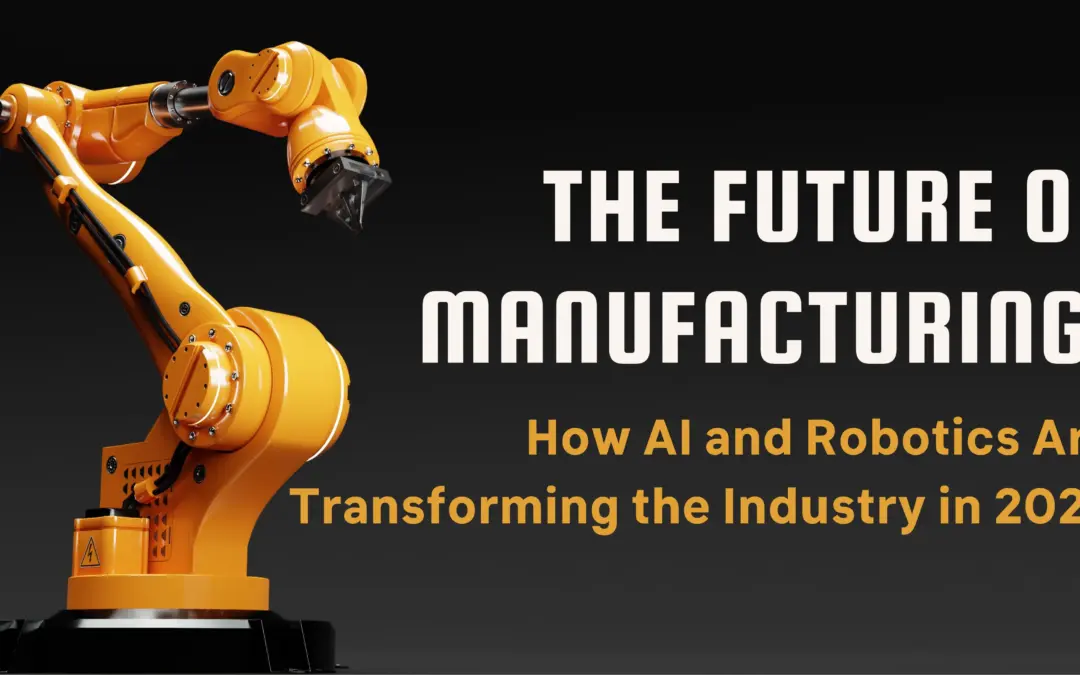Remember when factories were all about clunky machines and workers in hard hats manually assembling products? Those days are fading fast. By 2025, manufacturing will look more like a sci-fi movie except it’s real, and it’s happening right here in Australia. Kedra Digi is helping local manufacturers ride this wave instead of getting swept away by it.
How AI and Robotics Are Changing the Future of the Manufacturing Industry in 2025
So, what’s changing? Let’s pull back the curtain.
1. AI-Powered Factories: Smarter, Not Harder
Think of AI as the ultimate factory supervisor—one that never sleeps, never makes mistakes, and keeps getting sharper over time.
- Predictive Maintenance: Imagine a conveyor belt that texts you before it breaks down. AI analyzes vibrations, temperature, and wear patterns to schedule repairs during planned downtime—no more frantic 3 AM emergency calls.
- Quality Control: A Melbourne-based food packaging plant recently cut defects by 40% using AI cameras that spot mislabeled products faster than any human could.
- Demand Forecasting: Instead of guessing how many widgets to make next quarter, AI crunches everything from weather patterns to TikTok trends to predict exactly what customers will want.
This exceeds basic automation, effectively providing your factory with a superior understanding of efficiency.
2. Robotics: The New Workforce
Forget the old image of robots locked in safety cages. Today’s bots are more like ultra-capable coworkers.
- Collaborative Robots (Cobots): At a Sydney automotive plant, cobots work alongside humans to install car seats—they handle the heavy lifting while workers focus on precision adjustments. No more back injuries, no more burnout.
- Autonomous Mobile Robots (AMRs): These self-driving trolleys are the secret behind an Adelaide brewery that doubled its shipping speed. They navigate around people and obstacles, delivering ingredients exactly where they’re needed.
- 3D Printing Robots: A Perth mining equipment manufacturer now prints custom drill parts overnight. What used to take 6 weeks (and costly international shipping) now happens before breakfast.
The best part? These aren’t sci-fi prototypes—they’re tools Australian businesses are using right now.
3. The Rise of the Digital Twin
Picture this: Before your factory tests a new layout, you simulate it in a perfect virtual copy where:
- Energy bills drop 15% because the AI model shows exactly where heat leaks happen.
- New hires train on holographic machines before touching actual equipment—like a flight simulator for factory workers.
It’s a crystal ball for manufacturing.
4. Sustainability in Smart Manufacturing
Green manufacturing used to mean higher costs. Now, AI turns sustainability into a profit booster:
- A Victorian dairy plant uses robot arms to precisely portion packaging film, slashing plastic waste by 30%.
- AI micro-adjustments in a Newcastle steel mill’s furnaces cut energy use equivalent to powering 600 homes annually.
- Solar-powered AMRs in warehouses are eliminating diesel forklifts—one Sydney logistics hub reports 90% fewer emissions.
For manufacturers, going green now means saving green.
5. What This Means for Manufacturers
It’s about replacing people and supercharging them:
- A family-owned NSW textile mill competes with global giants by using affordable AI tools to optimize dye formulas, reducing waste and vibrancy inconsistencies.
- Real-time AI tracking helped a Tasmanian boat builder survive supply chain chaos by automatically rerouting materials when floods hit a supplier.
The message? You don’t need to be a mega-corporation to play this game.
Final Thoughts
The future isn’t coming—it’s unloading in your factory right now. Whether it’s AI catching errors humans can’t see, cobots easing the physical grind, or digital twins preventing costly mistakes, 2025’s manufacturing winners will be those who embrace these tools today.
Kedra Digi’s tip: Start small. Pick one pain point (like unplanned downtime or quality checks) and pilot a solution. Most of our clients see ROI in under 6 months.

